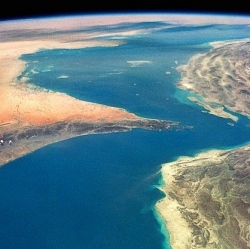
Seeing as we can all agree that global warming is definitely real, it’s probably a good idea to start doing something about it. Making slight changes to our lifestyle is obviously a ridiculously thing to suggest, so let’s move on to more realistic schemes like global weather modification through controlled atmospheric aerosol release, which might actually be affordable.
While releasing aerosols into the atmosphere sounds like a bad thing (and it very well may be, in the long run), we know that it’s an effective way to cool the planet down in the short term since we can measure the effect every time a major volcano erupts. For example, the 1991 eruption of Mt. Pinatubo added about 20 megatons of sulfur dioxide to the upper atmosphere, which lowered the average summer temperatures of Northern Europe by about four degrees Fahrenheit.
A recent study in Environmental Research Letters took a look at ways that it might be possible for humans to achieve something similar without having to set off an actual volcano, and there are a bunch of ideas that look like they might work for an amount of money that’s easily achievable within the next few years. Here are some ideas, based on delivering several megaton of aerosols into the atmosphere at a sufficiently high altitude:
Modifying a fleet of Boeing 747s for high altitude flight and aerosol delivery would cost just $1.1 billion per year. We’d only need 14 of them, and we could buy used ones on the cheap. However, they max out at about 45,000 feet. Going higher (up to 65,000 feet) would require a fleet of 28 supersonic B-1 bombers at a cost of nearly $5 billion, and for extreme high altitude delivery, we’d need to spend $8.4 billion on 133 F-15s that could "zoom-climb" up to 85,000 feet.
